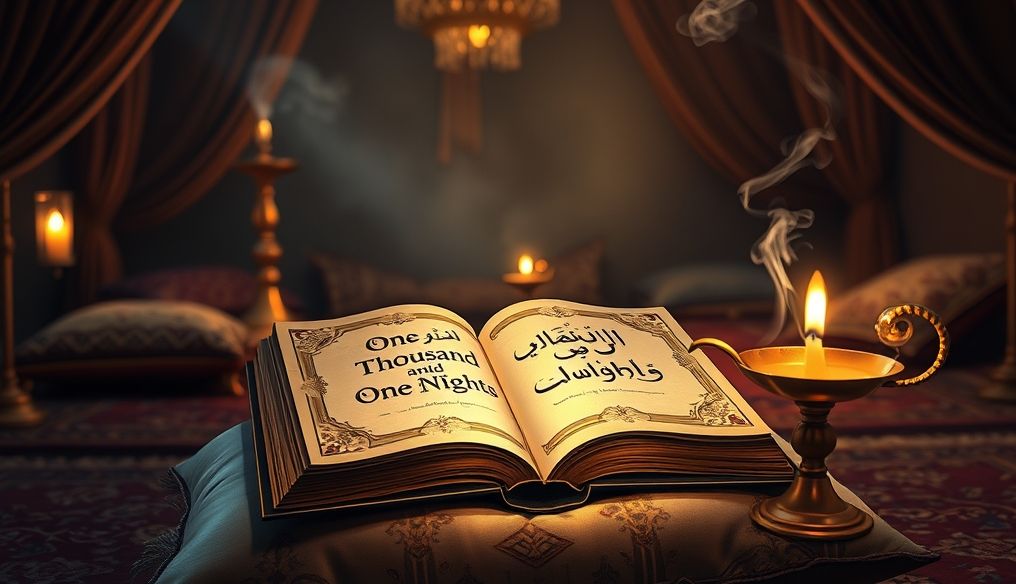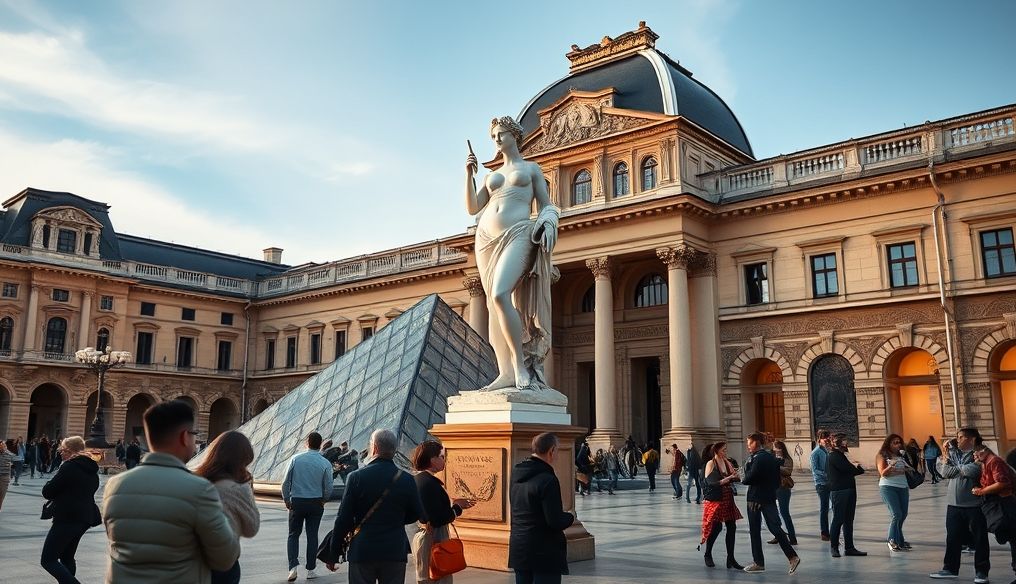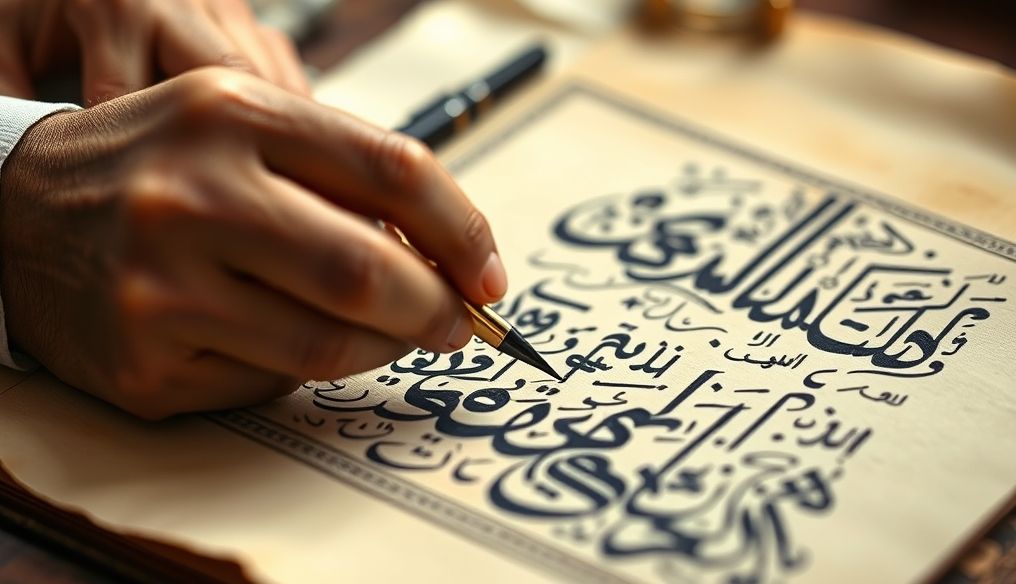What is the Story of "One Thousand and One Nights" and the Origin of its Tales?
"One Thousand and One Nights" (also known as Arabian Nights) is a global collection of stories with diverse origins, rooted in various civilizations such as Persian, Indian, Arabic, and Egyptian. It's not just a book; it's a journey through time and space, carrying tales of magic, adventure, and wisdom.
Chapter 1: Historical Origins of "One Thousand and One Nights"
Persian and Indian Roots
Historians believe that the core of "One Thousand and One Nights" dates back to an ancient Persian book called "Hazar Afsan" (A Thousand Myths). This book, containing a collection of Persian and Indian folk tales, served as the foundation upon which the Arabic collection was later built. Among the tales that transitioned from "Hazar Afsan" to "One Thousand and One Nights" is the story of King Shahryar and Scheherazade, which is the framing story that connects all other tales.
Example: The story of "Sinbad the Sailor" is believed to be inspired by the voyages of sailors and traders in the Indian Ocean, which were common in the Middle Ages.
Arabic Translation and Editing
During the Abbasid era, "Hazar Afsan" was translated into Arabic and named "Alf Layla" (A Thousand Nights). Over time, Arab storytellers and writers added new tales to the collection, inspired by Arabic and Islamic culture. Baghdad, at that time, became a vibrant cultural center, contributing to enriching "One Thousand and One Nights" with tales reflecting daily life, customs, and Arabic traditions.
Chapter 2: The Framing Story: Shahryar and Scheherazade
King Shahryar and Revenge
“One Thousand and One Nights” begins with the story of King Shahryar, who discovers his wife's infidelity and decides to take revenge on all women by marrying a virgin every night and killing her in the morning. This tragic situation continued until Scheherazade, the vizier's daughter, offered herself to the king to end this massacre.
Scheherazade and the Nightly Tales
Scheherazade possessed great intelligence and acumen, in addition to extensive knowledge of stories and tales. Each night, she would tell the king a captivating story, and as morning approached, she would stop at an exciting point, prompting the king to postpone her execution for another night to learn the end of the story. Scheherazade continued to tell stories for a thousand and one nights, until the king fell in love with her and abandoned his evil plans.
Statistic: The story of Scheherazade is believed to be a symbol of the power of storytelling and its ability to change souls and save lives.
Chapter 3: Most Famous Tales of "One Thousand and One Nights"
Aladdin and the Magic Lamp
The story of Aladdin and the Magic Lamp is one of the most famous tales of "One Thousand and One Nights." The story tells of a poor young man who finds a magic lamp, from which a genie emerges, granting him everything he asks for. Using the lamp's power, Aladdin becomes a prince and marries Princess Badroulbadour, but he must face the evil sorcerer who seeks to reclaim the lamp.
Ali Baba and the Forty Thieves
The story of Ali Baba and the Forty Thieves tells of a poor woodcutter who discovers a magical cave filled with treasures, used by the forty thieves as a hideout. Ali Baba learns the password to open the cave ("Open Sesame") and begins taking the treasures for himself, angering the thieves and putting him in danger.
Sinbad the Sailor and His Seven Voyages
Sinbad the Sailor is an adventurous merchant who embarks on seven sea voyages to distant and strange places. On each voyage, Sinbad faces different dangers and challenges, such as sea monsters, hurricanes, and deserted islands. Sinbad returns each time to Baghdad laden with riches and exciting stories.
Chapter 4: Impact of "One Thousand and One Nights" on World Literature and Culture
Literary and Artistic Inspiration
"One Thousand and One Nights" has inspired many writers, artists, and musicians around the world. Writers have drawn stories and novels from it, artists have created paintings and drawings, and musicians have composed musical pieces. Characters such as Aladdin and Sinbad have become part of the global cultural memory.
Example: The French author Antoine Galland, who translated "One Thousand and One Nights" into French in the 18th century, drew many stories from the collection, contributing to its spread in Europe.
Influence on Cinema and Television
Many tales from "One Thousand and One Nights" have been adapted into films and television series, achieving great success. These works have provided visual images of the enchanting tales and helped introduce a wider audience to "One Thousand and One Nights."
Chapter 5: Transformations and Modifications Through the Ages
Additions and Deletions
Over time, "One Thousand and One Nights" has undergone many transformations and modifications. Storytellers and writers have added new tales and deleted or modified others. Different versions of "One Thousand and One Nights" vary in the number of stories, their order, and their content.
Different Interpretations
"One Thousand and One Nights" has been interpreted in different ways throughout the ages. Some have seen it as just a collection of entertaining stories, while others have seen it as a reflection of Arabic and Islamic culture, or a symbol of the struggle between good and evil.
Chapter 6: Cultural and Social Aspects in "One Thousand and One Nights"
Depiction of Daily Life
"One Thousand and One Nights" provides a vivid picture of daily life in the Middle Ages. The tales depict cities, markets, homes, and palaces, and reflect the customs and traditions of the people, their ways of life, and their ways of thinking.
Women in "One Thousand and One Nights"
Women play an important role in "One Thousand and One Nights." Women appear in the tales as strong, intelligent, and independent characters, capable of making decisions and influencing events. Scheherazade is a prominent example of the power of women and their ability to change their destiny.
Chapter 7: Importance of "One Thousand and One Nights" in Modern Times
Preserving Cultural Heritage
"One Thousand and One Nights" is an important part of the global cultural heritage. The tales help us understand our history and culture and teach us noble values and morals.
Window to Other Cultures
"One Thousand and One Nights" provides a window to other cultures. Through the tales, we learn about the customs, traditions, and beliefs of different peoples, and we discover the similarities and differences between us.
Chapter 8: Tips for Reading and Enjoying "One Thousand and One Nights"
Choosing the Right Version
Many different versions of "One Thousand and One Nights" are available. Choose the version that suits your taste and reading level. Some versions are aimed at children, while others are more detailed and complex.
Reading Carefully
Read "One Thousand and One Nights" carefully and thoughtfully. Try to understand the meanings of the tales and their symbols. Think about the lessons you can learn from the stories.
Sharing with Others
Share the stories of "One Thousand and One Nights" with others. Talk about the tales with your friends and family. Read the stories to your children. Enjoy the magic of "One Thousand and One Nights" with those you love.
In conclusion, "One Thousand and One Nights" is more than just a book; it's a journey through time and space, carrying tales of magic, adventure, and wisdom. Enjoy this fascinating journey!




